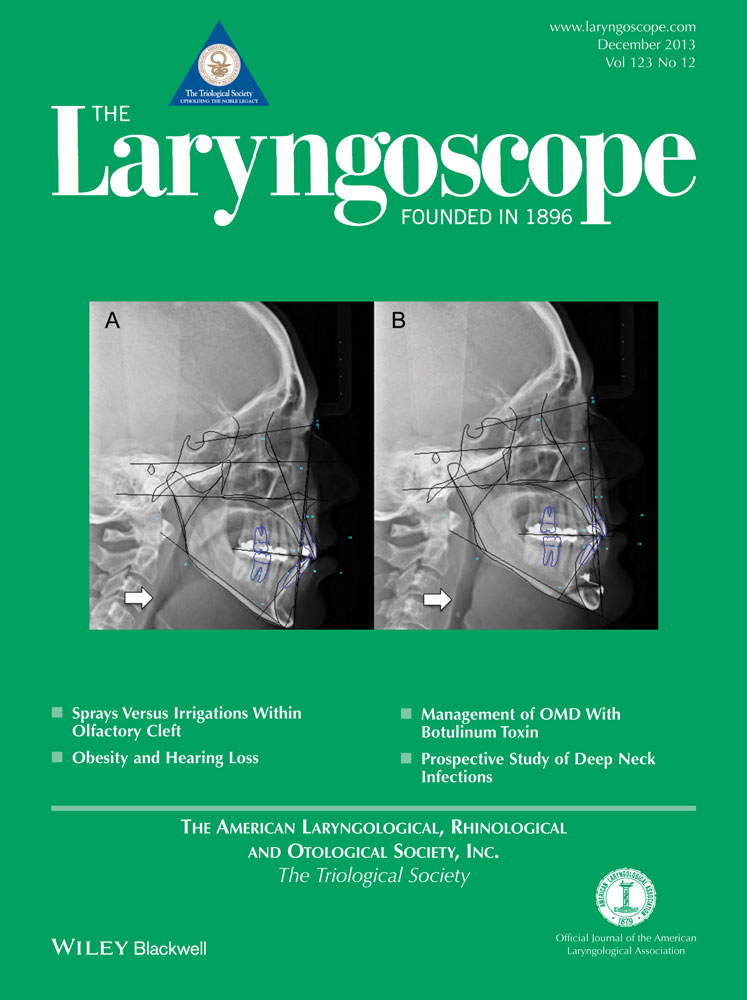Range image of the velopharynx produced using a 3-D endoscope with pattern projection
The work was partly supported by Japan Society for the Promotion of Science (JSPS) under Grants-in-Aid for Scientific Research (B) No.21390537, the Japanese Foundation for Research and Promotion of Endoscopy Grant, and the Suzuken Memorial Foundation. The authors have no other funding, financial relationships, or conflicts of interest to disclose.
Abstract
Objectives/Hypothesis
To measure movements of the velopharynx in detail, a novel method of producing range images of the velopharynx was developed using a 3-D endoscope. The purpose of this paper is to introduce this system and to clarify its accuracy.
Study Design
The standard errors of repeated measurements, intraclass correlation coefficients (ICC), ICC(1,1) for intrarater reliability, and ICC(2,1) for interrater reliability were measured using a phantom of the nasopharynx.
Methods
An endoscopic measuring system was developed in which a pattern projection system was incorporated into a commercially available 3-D endoscope. Right and left images of the endoscope were integrated into one video file and digitized at a horizontal and vertical resolution of 640 × 480 pixels, as odd and even scanning lines, respectively. After separation of the video file into right and left images by interlace interpolation, correcting the distortion of the camera images, rectifying, and stereo-matching range images of the velopharynx were produced. The distances between two points, which were marked at an interval of 5 mm on the uvula and the pharynx of the phantom, were measured.
Results
The standard errors of repeated measurements were 0.02 horizontally and 0.01 vertically. The ICC(1,1) and ICC(2,1) were 0.83 and 0.94, and both correlation coefficients were considered to be “almost perfect.”
Conclusion
The present endoscopic measuring system provided relatively accurate and reliable range images of the velopharynx, and enabled quantitative analysis of movements of the velopharynx.
Level of Evidence
N/A. Laryngoscope, 123:E122–E126, 2013




